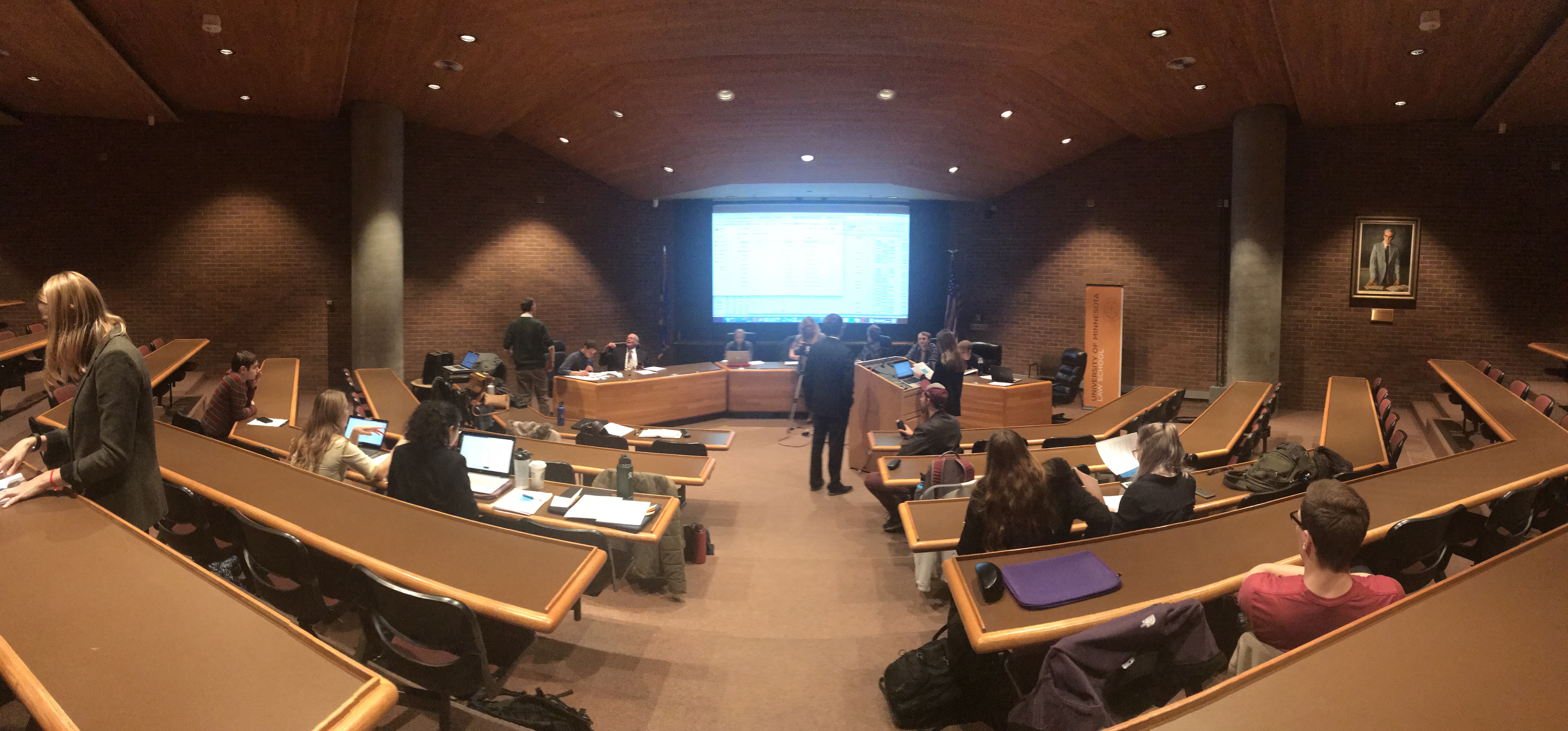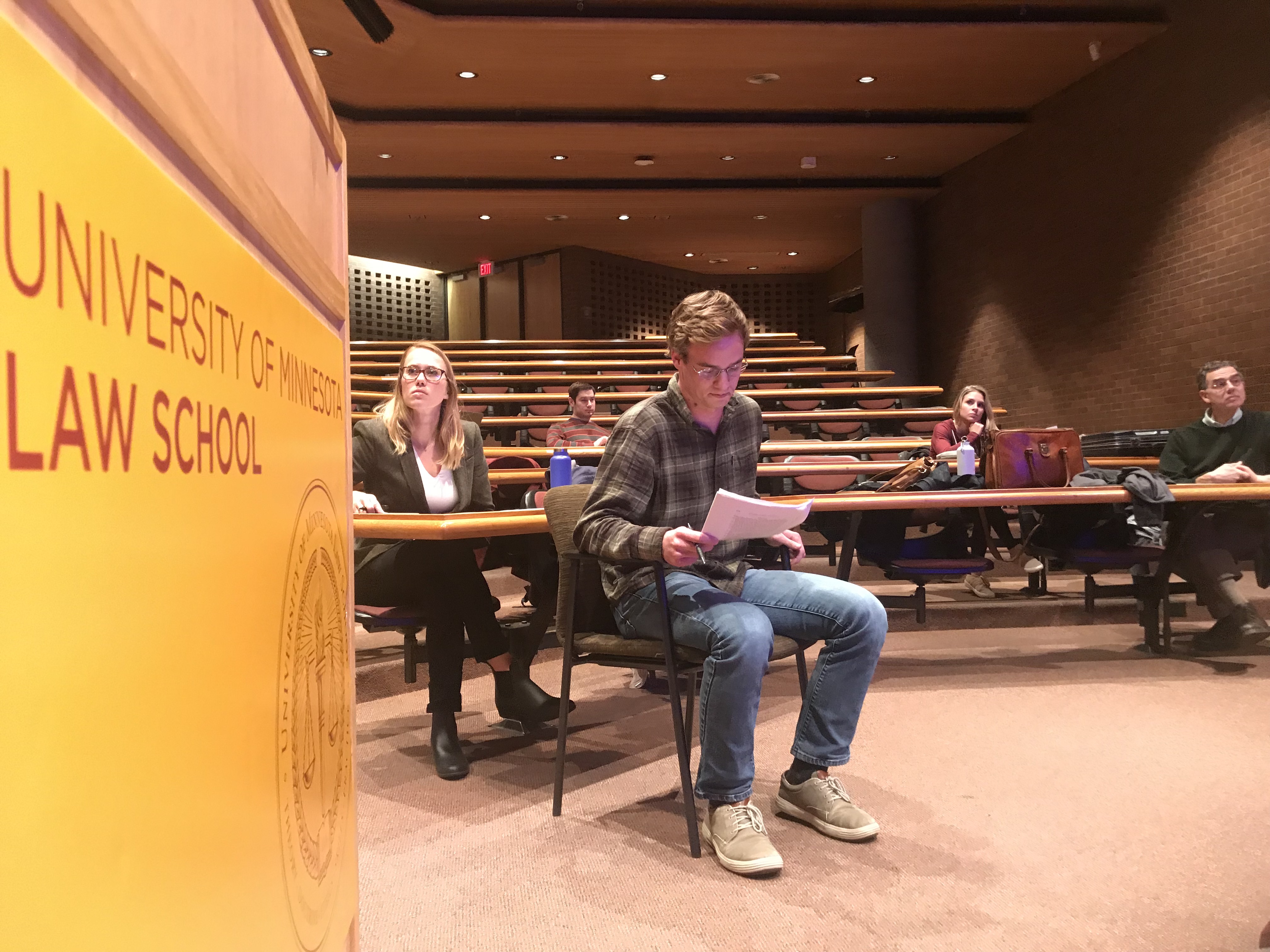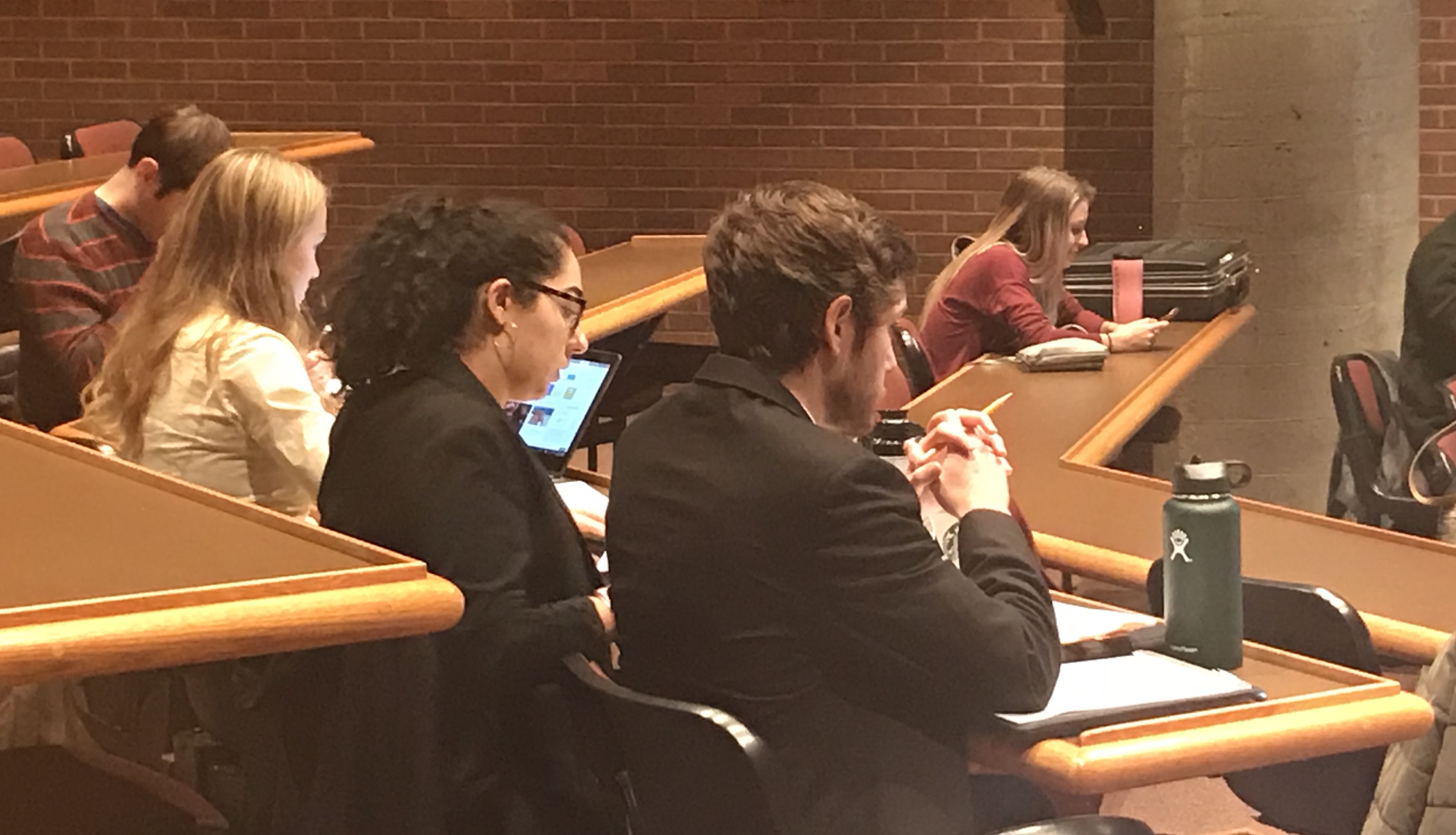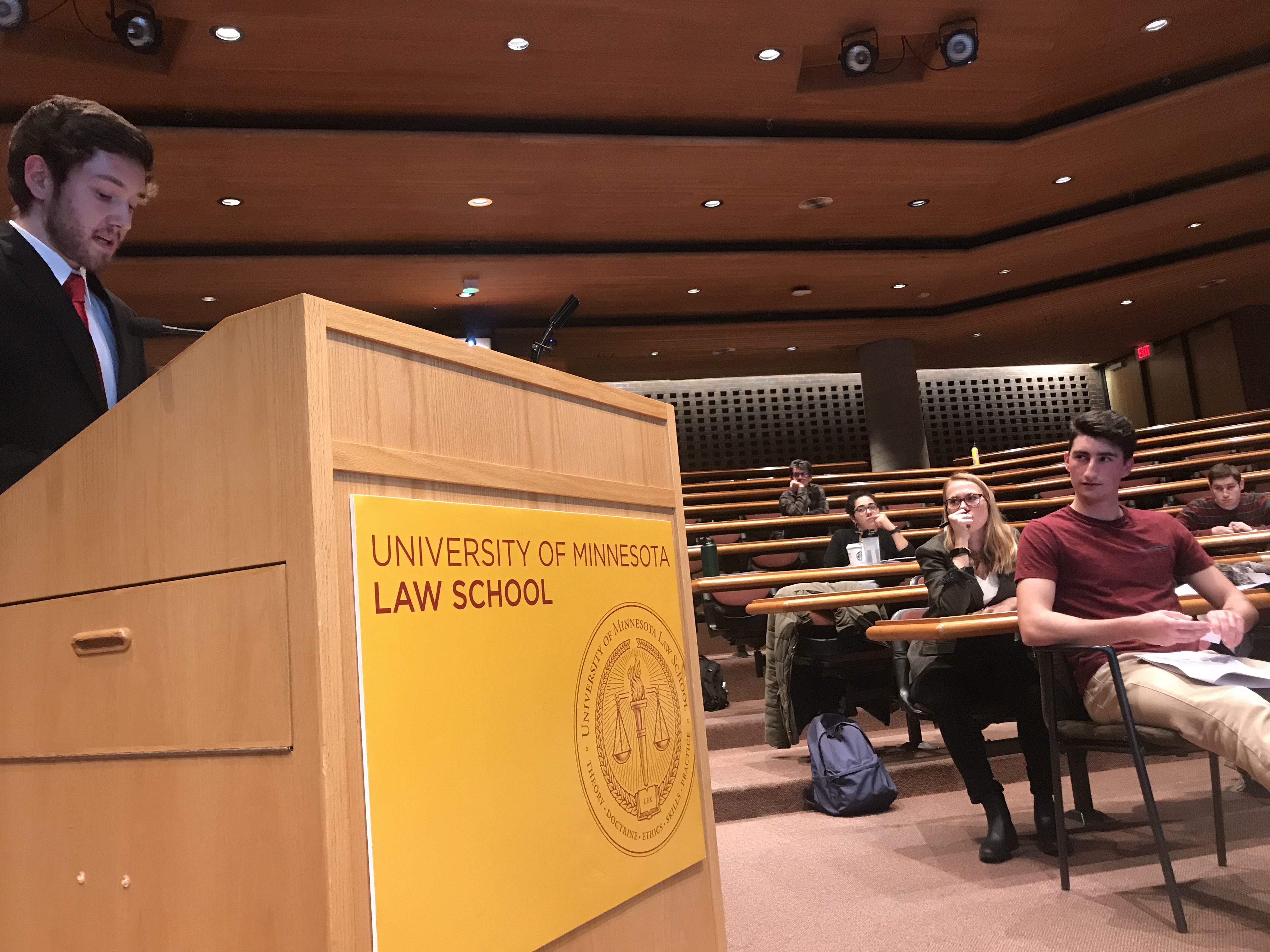We’re moving into the next phase of Science Court, as it’s time for the pre-trial evidence review. That means today is the day the judge will decide which science-based evidence will be allowed in the trial.
Listen to Episode 5 of our Podcast for an overview of the pretrial hearing by Luke Diamond:
Or watch this video by Porter Larkin to see what went down:
In the past week, the pro and con Legal Teams decided which 5 pieces of evidence they wanted to challenge, and the Science Team prepared to fight to get the evidence they collected admitted. Let the battle begin.
The class gathered in one of the lecture halls in the University of Minnesota Law School. We were joined by Judge Bill McGinnis and Richie Lenne, a social psychology grad student acting as a court appointed expert in the area of scientific research evaluation, who presided over the hearing and ultimately decided what evidence would be admitted.

Here’s how it works:
- A Science Team member presents on why they think the challenged evidence should be admitted
- A member of the challenging Legal Team cross examines the Science Team member
- A cross examination is when an attorney asks pointed questions to the science team member in order to highlight the problems with the evidence
- Closing statements from challenging legal team attorney
- Science team member gets a chance to respond
The judge can ask questions at any time. This is repeated for every piece of evidence challenged. Judge McGinnis did not hold back with his questions. “If I think something is important and you are not talking about it I will ask you about it,” warned McGinnis.

One commonly asked question by Judge McGinnis was: “What is your primary reason for challenging this piece of evidence?” The two most common reasons evidence was challenged was:
- Relevance
- Lack of credibility
Science Team members were quick to defend their research. When initially collecting evidence, Science Team members scored each piece of evidence based on the quality of the research on a 1-10 scale (known as a “Q” score). Interestingly, all of the challenged pieces had a score above five, and multiple piece had scores as high as nine. This lead to some heated questioning as Science Team members fought to allow in their highly rated research, and the Legal Team fought back with just as much passion to keep it out.
“I think the con team did come up with the one argument that I did not want anybody to make,” commented one Science Team member (WHO?)
In the end, there was a mix of admitted and denied evidence on both the pro and con sides.
- Pro
- Three pieces of evidence where successfully denied
- Two pieces of evidence was admitted
- Con
- Four pieces of evidence where successfully denied
- One piece of evidence was admitted

Although some pieces of evidence were admitted, there were limitations placed on the use of the evidence.
- Has to be presented fairly and accurately as to what it did and didn't study
Judge McGinnis summed up the evening:
“I feel that both sides did an excellent job of trying to present things in a logical professional fashion. I don't think either side gained one way over the other on the evidence. I think the evidence was excluded or omitted based on good principles, and I think that actually makes things better, because the evidence that will be left will be more credible and of more value to the jury when we get to the actual trial.”
So now the evidence is in! Next step: preparing for the trial. You can apply to be a member of our jury by clicking here!
Follow us on Facebook, Twitter, and Instagram!
